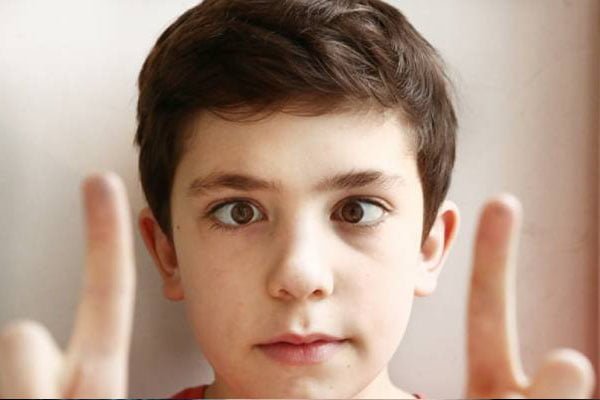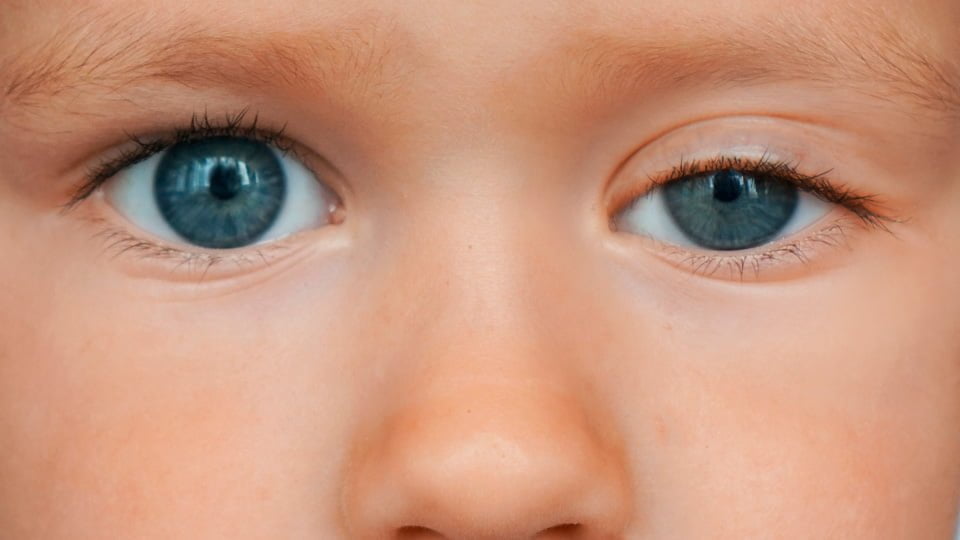PTOSIS and Squint Surgery in Pakistan | Cost of Squint Surgery
- Home
- Services
Strabismus
Strabismus is a condition in which the eyeballs are misaligned. It typically involves a lack of coordination between the extraocular muscles that prevents bringing the gaze of each eye to the same point in space and with or without proper binocular vision, which may adversely affect depth perception.
Strabismus is equally common in boys and girls. It sometimes runs in families.
Adult strabismus patients have negative effects on their self-image and problems with work, school, and sports because of their strabismus.
To correct their inability to focus properly, many adults with strabismus have to tilt or turn their heads when focusing. They also are unable to make direct eye contact with both eyes when looking at people.

It is estimated that up to 5 percent of all children have some type or degree of strabismus. When strabismus is congenital or develops in infancy, it can cause amblyopia, in which the brain ignores input from the deviated eye. Strabismus can lead to a permanent weakening of vision in the strabismic eye called amblyopia sometimes referred to as lazy eye.
Nearly four in every 100 adults have strabismus. It can be a disorder of the brain or a disorder of one or more muscles that move the eyes.
Strabismus may be classified as unilateral/constant if the same eye constantly turns in or out, or alternating/intermittent if the eye only turns in or out sometimes. Most adults with strabismus have had the condition since childhood.
Acquired strabismus begins in adulthood due to medical problems such as diabetes, thyroid disease, myasthenia gravis, brain tumors, head trauma, or strokes. Occasionally, a cataract or a tumor in the eye can cause strabismus. These conditions may require urgent medical attention.
The vast majority of people with strabismus, however, have none of these problems Occasionally, misalignment of the eyes can occur after an eye surgery such as cataract surgery or retinal surgery.
Adults with strabismus may experience eye fatigue, double vision, overlapped or blurred images, reading difficulty, and a pulling sensation around the eyes
There are two tests commonly used to diagnose strabismus. With a cover test, the doctor covers each eye one at a time while the patient is looking at an object in the room. Depending on how the eye shifts when the cover is moved, strabismus can be diagnosed.
Flashlights can be used to test the alignment of the eyes. As the patient looks at the light, the doctor can see a reflection on the front surface of the eye. If the eyes are properly aligned, the reflection will be in the same spot in each eye. If strabismus is present, the reflection from the light will not be in the same spot of each eye.
Adult strabismus has different causes. Depending on the cause, strabismus can be treated in several different ways.
Eye muscle surgery is the most common treatment for strabismus. Typically, strabismus occurs when the muscles surrounding the eyes act as though they are either too stiff or too weak. Your eye surgeon can loosen, tighten, or reposition certain eye muscles so that the eyes will be able to look straight. More than one surgery may be needed.
Eye muscle exercises can help treat a form of adult strabismus in which the eyes cannot align themselves for close work or reading. The eye exercises help retrain the eyes to focus inward together.
Eyeglasses with prisms can correct mild double vision associated with adult strabismus. A prism is a clear, wedge-shaped lens that bends, or refracts, light rays. For adults with mild double vision, the prism eyeglasses realign images together so that the eyes see only one image.
PTOSIS
Ptosis is a drooping of the upper eyelid. Ptosis occurs when the muscles that raise the eyelid are not strong enough to do so properly. It can affect one eye or both eyes and is more common in the elderly. It can block normal vision.
Childhood ptosis can cause amblyopia or “lazy eye.” All children should have regular eye exams by an ophthalmologist.
Congenital ptosis is often caused by poor development of the levator muscle that lifts the eyelid. Although it is usually an isolated problem, a child born with ptosis may also have eye-movement abnormalities, muscular diseases, lid tumors or other tumors, neurological disorders, or refractive errors. Congenital ptosis usually does not improve with time.

The most common cause of ptosis in adults is the separation or stretching of the levator muscle tendon from the eyelid. This process may occur as a result of aging, after cataract surgery or other eye surgery, or as a result of an injury.
Adult ptosis may also occur as a complication of other diseases involving the levator muscle or its nerve supply, such as neurological and muscular diseases and, in rare cases, tumors of the eye socket. (Common in diabetic and hypertensive patients)
The most obvious sign of ptosis is the drooping lid itself. Ptosis can affect one or both eyelids. It may be present at birth or occur later in life.
In congenital ptosis, the upper eyelid creases may be uneven with one another. The child with ptosis lifts the eyelids by raising his or her eyebrows. These head and facial maneuvers are signs that the child is trying to use both eyes to see. Abnormal head positions like this could cause serious neck problems.
A physical examination helps to determine the cause. Sometimes special tests may be done to evaluate suspected causes, such as myasthenia gravis
Surgery can treat ptosis by tightening the levator, or eyelid-lifting muscle. In severe ptosis, when the levator muscle is extremely weak, the lid can be attached to or suspended from under the eyebrow so that the forehead muscles can do the lifting.
Although surgery usually improves the height of the lid, both eyelids may still not appear perfectly symmetrical. In some cases, more than one operation may be required. In rare cases, full eyelid movement does not return.
If amblyopia is present, treatment with patching, eyeglasses, or eye drops may also be necessary.
We claim the best eye center in Lahore and one of the state of the art best eye hospital in Lahore that is equipped with the latest machinery and great ambiance. VisionX laser and eye clinic comprise all diagnostic services and you can get all eye-related services under one roof with very economical charges.
VisionX Laser and Eye Clinic are comprised of the best eye doctors in Lahore. We have vast experience in diagnosing and treatment of routine and rare eye diseases. We have the best eye surgeon in Lahore and the best eye surgeons that are skilled enough for ensuring the best visual and surgical results.
We claim the best eye center in Lahore and one of the state of the art best eye hospital in Lahore that is equipped with the latest machinery and great ambiance. VisionX Laser and Eye Clinic comprise all diagnostic services and Lasers and you can get all eye-related services under one roof at very affordable prices.
If you are near Shaukat Khanum Memorial Cancer Hospital & Research Centre or live nearby you can easily locate us by searching best eye surgeon near me or the best eye center in Lahore.
